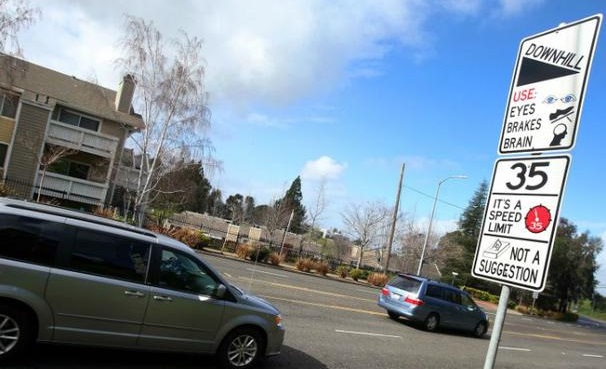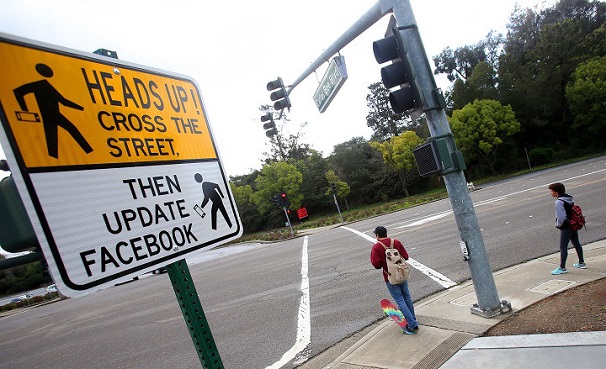As we've mentioned previously, asbestos is extremely dangerous. Its dust can cause lung cancer, mesothelioma, and a variety of other diseases, and statistics suggest that 20 lives are lost every week to asbestos-related illnesses.
With this in mind, you may shocked to learn that asbestos can reportedly be found in 86% of UK schools. A BBC News article posted earlier this week claims that asbestos, which was commonly used for insulation before the turn of the millennium, is "still present in nearly nine out of ten schools in the UK - higher than previous official estimates."
If true, this news is cause for concern indeed. Last month, the Health and Safety Executive ran a #BewareAsbestos campaign, repeatedly quoting statistics about the number of tradespeople (roughly 5,000) who allegedly die from asbestos-related diseases every year. These figures were alarming enough on their own, but we are now forced to consider how much larger the numbers become when you factor in non-trade workers. The BBC report claims that 158 schoolteachers have died of mesothelioma in the last decade, and it is probably safe to assume that more have been taken by cancer, asbestosis, and the other diseases for which asbestos has been held responsible over the years.
Perhaps even worse is the thought of our children being exposed to asbestos dust. Exposure can cause serious health problems in later life, and the oft-quoted fact that 'asbestos is safe if left undisturbed' is not especially reassuring given the circumstances. After all, if asbestos exists in a school environment, the chances of it being "left undisturbed" are slim indeed!
What can be done about asbestos?
- Where possible, asbestos should be removed by professionals using the proper PPE
- Asbestos warning signs can be utilised to warn people of areas where asbestos is present
- We can educate people (especially children) about the dangers of asbestos using informational posters and other means
You might have noticed by now that Health and Safety posts frequent the Label Source blog almost daily. As suppliers of health and safety signs and warning labels, we not only understand the importance of having the correct signage in compliance with health and safety legislations in your work place, but are also advocates for celebrating health and safety rules and regulations, which are put in place to protect us, saving lives and minimising risk.
Over the past few months in particular, health and safety has become somewhat of a scapegoat for businesses, blaming health and safety legislations for bizarre decisions and causing public hostility towards health and safety, which is something that every one of us needs at some point in our lives in order to live a safe and risk-minimised life (wouldn't that be nice!)

Many don't actually realise how vitally important health and safety legislation is, and unfortunately through tragic accidents which make the press, we see examples almost daily of deaths, injuries or property damage due to a relaxed attitude towards health and safety, with companies in all areas and of all sizes being prosecuted almost weekly for breaches of these legislations.
Not having the appropriate health and safety signs and hazard warnings in place can lead to fatal accidents, as these three devastating news stories show:
1. Farmer in Court over Driver's Electrocution
A HGV driver was electrocuted to death after hitting a power line which had no corresponding safety signage or barriers.
2. Safety Failings put Finchley Worker in Burns Coma
A labourer from North London received life-threatening burn injuries in an explosion on a farm after severing a 415-volt electrical cable, unaware it was live. There was no health and safety signage in place highlighting the live cable.
3. Developer Prosecuted after Lorry Hit Power Line
A developer in Kettering has been fined after a lorry hit a power line which caused a power cut in 11 properties. Similarly, the line had no health and safety signs.
The important thing to highlight here is that not only do these three examples show tragic injuries and even fatalities due to lack of health and safety signage, but they also show three different cases of employers or individuals being prosecuted for their failings. Make sure that your company meets the appropriate health and safety legislations by ordering your Safety Signs from Label Source today.

We at Label Source would like to applaud the American city of Hayward, California, who have taken a rather novel approach to road safety. One can only assume that Hayward's residents weren't paying enough attention to the usual traffic signs, because one main road is now dotted with a slightly more unusual breed of signage:
"35 - It's a speed limit, not a suggestion!"
Downhill - Use: Eyes, Brakes, Brain"
Frank Holland, speaking on behalf of the city, said: "The idea is for people to do a double take and then realize, 'Oh, they want me to be careful on the hill. Standard traffic signs often become white noise...we wanted to use humour to get people to take a second look and think."
It's a great idea, and Hayward's attention-grabbing ploy seems to have worked - not only are residents paying more attention to the signs, the signs have actually made international news!
And motorists aren't the only targets of these humorous signs. They've got one for pedestrians, too:

The British public (sometimes justifiably) have very little patience for health and safety measures, and we think it would be fantastic if local councils took a leaf from Hayward's book and started using a bit of humour - it is a great way to capture people's attention and ensure that hazards don't go ignored.
It's important, though, to note that Hayward's rib-tickling signs aren't enough on their own; one local resident admitted that the signs were "cool", but added that "it's hard to see the speed limit". Hayward haven't replaced their standard road safety signs with the ones in these photos; they've just supplemented them with something fun and light-hearted. Both are important!
Photos: Aric Crabb/Bay Area News Group
As of late, the health and safety culture has come under fire from a number of angles due to some rather questionable 'health and safety' stories making the national press. Indeed, over the past few months the papers have been full of peculiar decisions by businesses which are reportedly due to health and safety - including Newcastle racecourse banning picnics due to visitors' chairs supposedly presenting a health and safety issue. Similarly, it was reported that factory workers in Plymouth were left in tears after their wedding rings were cut off due to health and safety.

To many, these decisions seem unfair, unjust and perhaps even a little bit silly. Many have spoken out about how our health and safety culture has 'gone mad' or is 'ruining childhood'. The truth is, however, that it isn't the health and safety culture which has run amok - rather, it is the businesses who are willing to use health and safety as an excuse for their decisions. The health and safety blame game has developed in such a way that the Health and Safety Executive (HSE) has developed a myth-busting panel who will independently challenge advice or decisions supposedly made in the name of health and safety they believe to be inaccurate or disproportionate.
Indeed, the HSE Myth Busters have spoken out about some ludicrous decisions made in the name of health and safety - including the Newcastle racecourse example we mentioned at the beginning of this blog - condemning these decisions, and stating that in fact these decisions have not been made in the name of health and safety.
As well as being damaging to the HSE's reputation, the health and safety blame game also presents us with a further problem with regards to health and safety itself. Blaming business decisions on health and safety is extremely damaging to health and safety as a whole; there are health and safety rules and legislations for any business and indeed almost any public place, and the rules are in place to save lives, protect safety and minimise any risk. It is vital that health and safety legislations are respected and followed - otherwise, we could be at risk of an increase in accidents and, potentially, fatalities.
Purchase your Safety Signs to make sure your place of work is complying with the health and safety legislations here.
Contaminated land poses a number of safety issues ranging from impact on human and animal health, infection of soil, plants and fauna, and pollution of surface water or groundwater.
These sites of former industrial activity such as steelworks, refineries, mines or factories leaving residues of heavy metals, such as lead and cadmium; or mines and landfill sites producing methane gas; or special sites blighted with asbestos, radioactive substances or explosives.
These site pose dangers to workers, contractors and the general public from exposure to carcinogen and mutagenic elements through breathing or skin contact; from the ingestion of plants or vegetation ; damage to aquatic stock through soil contamination leaching into water courses, as well as other risks from corrosive, explosive or flammable waste; or asphyxiation from gases.
These zones need to be clearly marked to deter entry, and to warn of the hazards and dangers from entry into designated contaminated land sites.